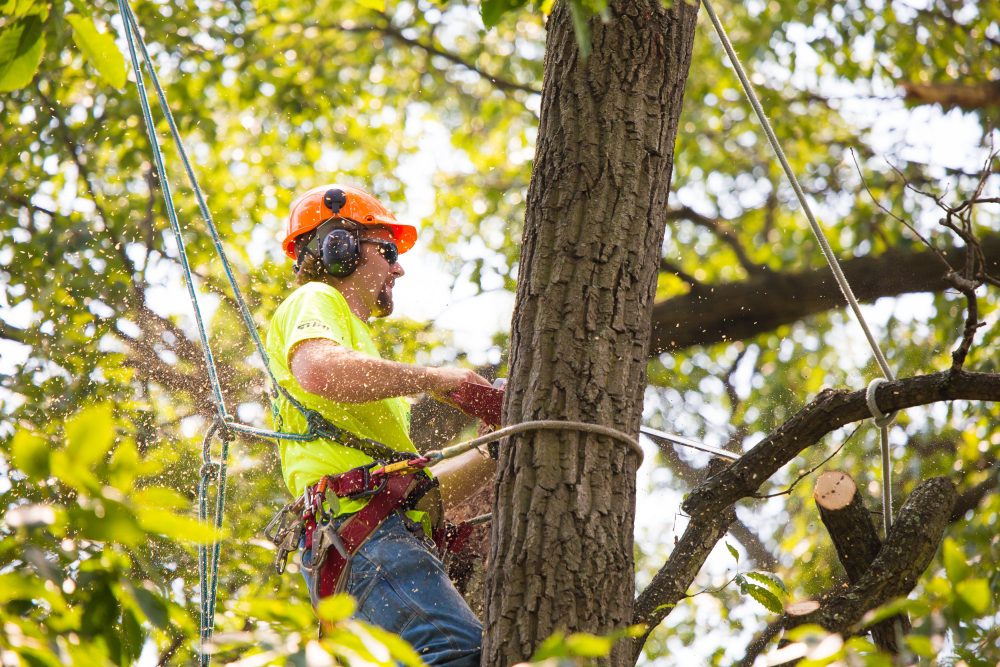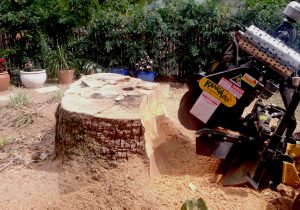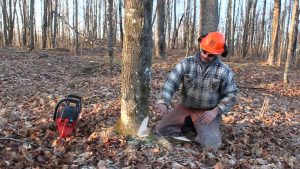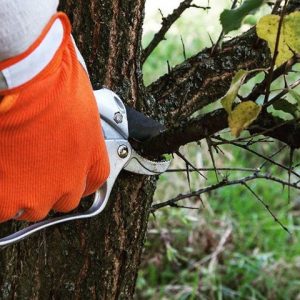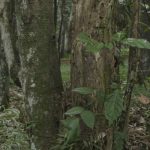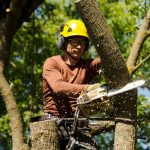Many different diseases affect trees throughout Australia, and some of them have invaded the country despite the government’s strict biosecurity measures. In many cases, early intervention can help save the tree in question, so any tree owner needs to inspect them often and take action as necessary. So, to help you remain vigilant, what are 10 of the most prevalent tree diseases in Australia at the moment?
1. Canker
This is one of the worst tree diseases in Australia, and at the moment, there is no cure. It is caused by a fungal pathogen that can enter the tree through tiny fissures and interfere with its ability to create sap. When infections reach the trunk, it will eventually split, but in the meantime, you’ll notice blisters around the branches. Canker is particularly prevalent in cypress trees, and the pathogen can easily be spread by weather conditions, nesting birds or burrowing insects.
2. Emerald Ash Borers
If you can see leaves on your ash trees turning yellow well before they should, they may have been affected by these borers (small beetles). By boring into the bark, they infect the tree and will eventually cause the branches to decay. Unfortunately, once they have invaded, there is very little you can do to save it, and you may have to consider tree removal.
3. Citrus Gall Wasp
Flying insects are to blame for infecting these citrus trees. In this case, the gall wasp lays its eggs within the branch structure, leading to infection. When this happens, the tree may begin to swell, and if you notice this, you may have to remove the branches in question to save the rest of the tree. If you don’t take any action, the situation will worsen when the eggs begin to hatch, and the disease will become more prevalent.
4. Anthracnose
This type of disease is caused by a fungal infection that leads to defoliation. It can be particularly prevalent in areas with high humidity or where trees are closely bunched, lacking airflow. If you notice holes in leaves and a loss of cover, employ tree pruning to cut out the affected areas as soon as possible.
5. Root Rot
As the name implies, this disease begins underground and is caused by a fungus in the soil. Again, this is characterised by wilting leaves during the summertime, but it is possible to treat this condition if caught early enough. The good news is that this problem can be selective and will not necessarily affect all trees in the vicinity.
6. Heart Rot
Insects may introduce heart rot disease as a fungal infection. The fungus can enter the tree’s trunk through fissures or where any bare wood may be exposed. The best way to avoid this type of infestation is to keep the area around the tree clear of any dead branches, mushrooms or fungi. When the disease takes hold, it can cause the heart of the tree, trunk and branches to decay.
7. Oak Wilt
Oak wilt is soil-borne and can be spread by underground root contact. It can also be introduced by burrowing beetles that carry the soil fungus with them. Be on the lookout for wilting leaves on your oak trees especially in peak season. This is highly infectious and can easily spread to neighbouring trees in your garden.
8. Powdery Mildew Disease
Look out for a greyish powdery-like substance on the leaves of your tree to try and avoid an infestation with powdery mildew disease. This substance is caused by tiny spores that form on the top of each leaf. And, as time goes by, the spores will release and fly through the air to affect neighbouring trees as well. Fungicides may treat this issue if caught early enough.
9. Myrtle Rust
Some think that this disease first originated in South America, but it has become prevalent in certain parts. Myrtle rust will affect a wide range of species, including eucalyptus, and it has proven to be very difficult to contain. It’s introduced by a fungal pathogen and is identified by yellowish spots on the leaves, which will begin to turn colour before the leaf starts to twist and fall. If discovered, it’s important not to touch the infestation but to try and contain it as soon as possible as the spores can break off and contaminate nearby plants. Fungicides may control an infestation.
10. Pink Disease
Pink disease is also caused by a fungal pathogen that is widespread across Australia and can affect a broad range of trees. And again, the pathogen will produce spores that can easily be carried in the wind to other trees. In this case, the pathogen grows inside the bark and causes it to bulge and eventually split. The problem can worsen during the rainy season when humidity is at its highest. Watch out for a strange pattern on the surface of the tree, which looks like a spider’s web. If you do encounter pink disease, you may be able to save the situation with tree pruning, followed by burning.
What Can You Do to Protect Your Tree Stock?
As already mentioned, every tree owner needs to keep an eye on these plants throughout the year and look for anything unusual. Be familiar with the appearance of each healthy tree, and if you see anything untoward, take action immediately. It’s also a good idea to keep up with tree pruning to get rid of any excess branches or leaves, and even tree lopping if the canopy has spread too far.
If you do come across problems that may have taken hold, you may have to bring in experts to carry out tree pruning and tree removal in the worst-case scenario. If you have to cut down any trees to try and avoid problems on the rest of your land, ensure that you take care of stump removal as well. Sometimes, the pathogen can remain in the stump or root system and could potentially spread to healthier trees nearby.
Tree diseases can be hard to contain and difficult to deal with. Always work with an experienced arborist if you encounter any problems.

